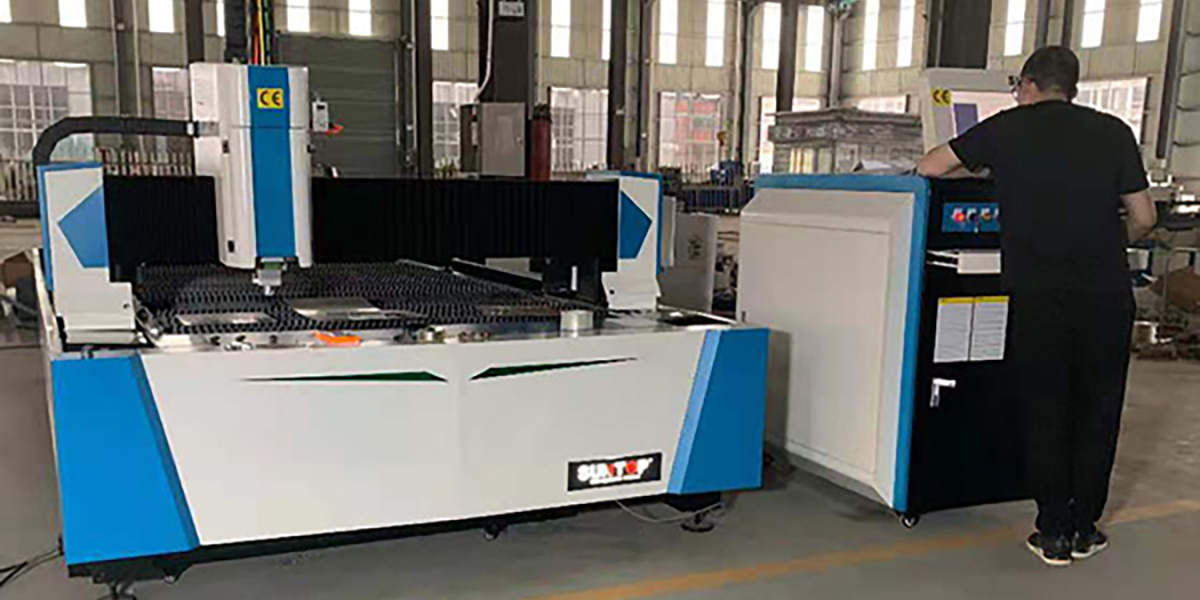1. Equipment requirements
Types of laser cutting machines:
CO2 laser cutting machine: Suitable for cutting non-metallic materials such as plastics, wood and some metals.
Fiber laser cutting machine: Suitable for cutting metals (such as stainless steel, aluminum, copper, etc.), with higher efficiency and smaller cutting width.
Equipment parameters:
Power: affects the cutting speed and the thickness of the applicable material. The higher the power, the stronger the cutting ability.
Cutting speed: The speed is closely related to the cutting quality and needs to be optimized according to the material type and thickness.
Focusing ability: The size of the focused spot is directly related to the cutting accuracy and detail performance.
Auxiliary equipment:
Smoke exhaust system: Effectively removes smoke and harmful gases generated during the cutting process to keep the working environment clean.
Gas assist: Such as oxygen and nitrogen, can improve cutting quality and speed and reduce heat-affected zone.

2. Material selection
Types of cuttable materials:
Metals: Such as steel, stainless steel, aluminum, etc., commonly used in industrial applications.
Non-metals: Such as plastics, wood and composite materials, suitable for decoration and lightweight structures, etc.
The impact of the thickness of various materials on the cutting process: Different materials and thicknesses have different requirements for cutting parameters. Thicker materials usually require higher power and slower cutting speeds.
3. Software and technical support
The application and importance of CAD/CAM software: used to design cutting graphics and generate cutting paths to improve cutting accuracy and efficiency.
The control software of the laser cutting machine: responsible for cutting parameter settings (power, speed, frequency, etc.), path planning and monitoring of the cutting process.
4. Human resources
Operator skills and training: professional skills and rich practical experience in operating laser cutting machines are required.
Safe operation specifications and maintenance knowledge: ensure that operators understand the safe operation standards and daily maintenance requirements of the equipment.

5. Infrastructure and environmental requirements
Power supply and stability: laser cutting equipment requires stable power support to ensure the normal operation of the equipment.
Spatial layout and ventilation facilities of shops or factories: reasonable spatial layout and good ventilation systems help improve work efficiency and work safety. Prevent potential hazards caused by the accumulation of smoke and gas.
The successful implementation of laser cutting depends on the organic combination and mutual cooperation of multiple factors such as equipment, materials, software, human resources and infrastructure. Click here for more information
1. Growth trend and potential opportunities of the laser cutting market
The laser cutting market is in rapid development and is expected to continue to maintain a steady growth trend in the next few years. This growth is mainly due to the continuous advancement of technology, the improvement of production efficiency and the increase in demand for high-precision processing. It is expected that with the increasing emphasis on environmental protection and sustainable development, the requirements for material utilization and processing accuracy will further promote the application of laser cutting technology. In addition, with the rise of intelligent manufacturing and automation, the intelligence and integration of laser cutting equipment will also create new market opportunities.
2. Demand analysis of different industries
Automotive industry: The demand for laser cutting in the automotive industry is mainly driven by lightweight and electrification trends. Laser cutting can efficiently process complex shapes and high-strength materials such as aluminum and high-strength steel, making it an important tool for body structure and component production. At the same time, the demand for personalized and customized body design has also increased the reliance on laser cutting technology.
Aviation industry: The aviation industry has extremely high requirements for the quality and precision of parts. Laser cutting technology has become the first choice for aviation material processing due to its high precision and low heat-affected zone characteristics. As the aviation industry continues to focus on reducing aircraft weight to improve fuel efficiency, laser cutting also shows strong market potential in the processing of composite materials and light metal parts.
Construction industry: In the construction industry, laser cutting is used for the processing of metal components and decorative materials, and its precise cutting ability can meet the complex needs of architectural design. As the construction industry transforms to sustainable development and green buildings, laser cutting technology has broad application prospects in processing new environmentally friendly materials.
Arts and crafts industry: With the popularity of personalized customized products, the demand for laser cutting in the field of arts and crafts is also rising. Whether it is wood, acrylic or metal, laser cutting technology provides artists and designers with great creative flexibility, enabling complex designs and exquisite craftsmanship.

3. The rise of small businesses and individual users and their impact on the market
In recent years, small businesses and individual users have emerged in the laser cutting market and become an important force driving market growth. With the gradual reduction in the price of laser cutting equipment and the popularization of operating technology, these users are able to enter the market at a lower cost. They have found a lot of application space in creative design, personalized products and small batch production, thus promoting the development of the industry.
The participation of small enterprises not only increases the diversity of the market, but also promotes innovation and flexibility, making the market more competitive. At the same time, the influx of individual users has also promoted the demand for small and convenient laser cutting equipment, which in turn has promoted the investment of equipment manufacturers in product design and technology research and development.
The future of the laser cutting market will be affected by many factors. The cross-application between industries, the participation of small enterprises and individual users will provide new opportunities for the continuous development of the technology and market expansion.

























